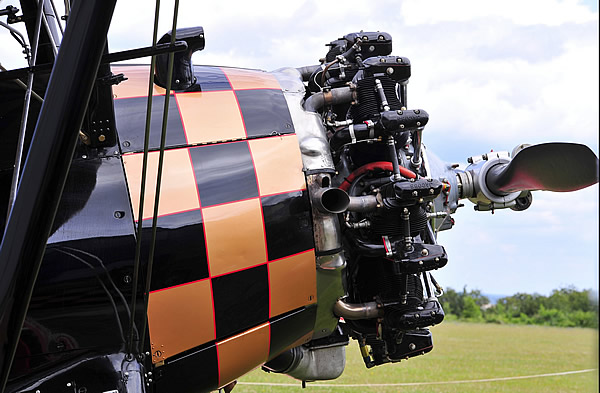Boeing Stearman Kaydet Trainer
Stearman Aircraft: The Early Years
Stearman Aircraft Company, Wichita, Kansas, South Oliver Street, showing completed biplanes in the foreground |
Lloyd Stearman, Walter Beech, and Clyde Cessna established the Travel Air Manufacturing Company in Wichita, Kansas in January of 1925. Considered the big three aviation pioneers, they established the "air capital" and set the goal to manufacture "a plane for every purpose." Travel Air became the leader in light commercial aircraft.
Stearman left the company and the state in 1926 but returned the following year. He founded the Stearman Aircraft Corporation, which was later acquired by a holding company for Boeing.
The Stearman company signed its first major military contract in 1934, and built 61 Navy Model 73 biplane trainers.
In 1938 Stearman became a division of the Boeing company, and in 1941 the company became the Wichita Division of The Boeing Airplane Company.
Among its accomplishments in Wichita was the production of nearly 10,000 of its famous biplane trainers by early 1945.
The Model 75
Although the company designed a range of aircraft, it is most known for producing the Model 75, commonly known as the "Stearman" or "Boeing Stearman" or "Kaydet". It made its first flight on November 26, 1934.
The Design
 Engine on Boeing Stearman |
The original U.S. Army trainer was the PT-13 with its 225hp Lycoming R--680-5 engine. The PT-17 used the Continental R-670-5 engine. Other variants followed, including the PT-18 (Jacobs engine) and the PT-27.
The Stearman was a two-seater biplane used as a military trainer. It featured rugged construction with a large, fixed tailwheel undercarriage, and accommodation for the student and instructor in open cockpits in tandem, with the instructor in the rear cockpit.
The Stearmans had fabric-covered wooden wings, single-leg landing gear and an over-built welded-steel fuselage. It was powered by a single, uncowled radial engine.
One of its advantages for pilot trainees was simplicity: it lacked radio and navigation instruments, had no flaps, and the landing gear did not retract.
Technical Specifications of the Stearman
| Span | 32' 2" | |
| Length | 24' 3" | |
| Gross weight | 2,717 pounds | |
| Top speed | 124 mph | |
| Cruising speed | 106 mph | |
| Range | 505 miles | |
| Ceiling | 11,200 feet | |
| Power | 220-horsepower Continental R-670-5 piston radial engine (PT-17) | |
| Crew | Two: instructor and student pilot |
Usage by the U.S. and Allies in World War II
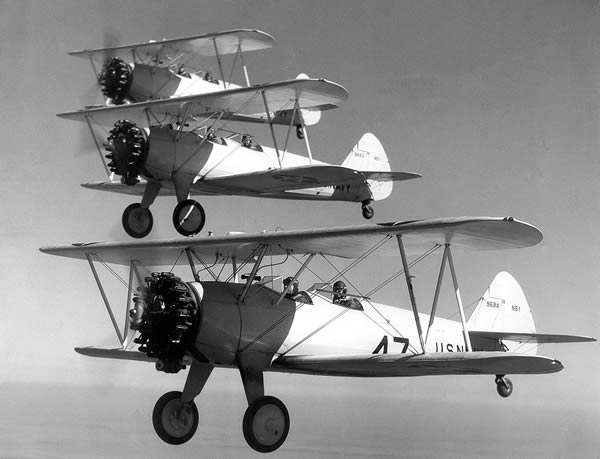 U.S. Navy Stearman N2S trainers flying in formation |
Despite its almost obsolete design, its simple, durable construction made it ideal as a trainer for novice pilots. It became a primary trainer (PT) for the U.S. Army Air Forces (as the PT-13 & PT-17), the U.S. Navy (as the NS1 and N2S), and with the Royal Canadian Air Force (as the Kaydet) throughout World War II. The Canadian name became the namesake of the series.
In addition, the trainers were sold to China, the Philippines, Venezuela, Argentina, Brazil and other countries for both military and civilian uses.
About half of all US military pilots who fought in WWII received their initial flight training in a Stearman. A further 10,000 RAF and Fleet Air Arm pilots used the Stearman trainer for primary training, at British Flying Training Schools throughout the United States, between 1941 and 1944.
Those Stearman Colors
So that the trainers could be easily distinguished in flight, they were painted bright colors.
The Army used planes with blue fuselages and chrome yellow wings and tail surfaces. The Navy planes had both fuselage and wings painted yellow. Later, Stearmans were silver, beginning around 1942. (see photos below with examples of the paint schemes)
A red stripe was sometimes used on the fuselage and wings to further indicate a "trainer".
U.S. Army Air Force Stearman with yellow wings, blue fuselage and yellow tail surfaces with red-white stripes... seen here is N1942N (Photo by DELEHELLE Eric) |
 |
U.S. Navy Stearman with yellow wings, fuselage and tail surfaces ... seen here is F-AZIP (Photo by DELEHELLE Eric) |
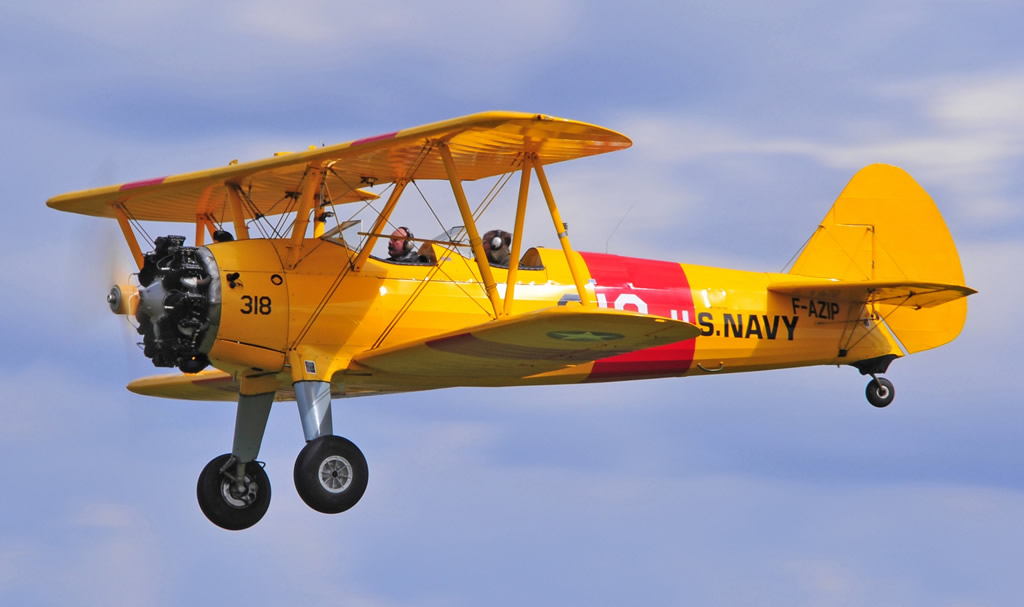 |
U.S. Navy Stearman, silver fuselage, yellow wings, blue tail surfaces ... seen here is F-AZXN (Photo by DELEHELLE Eric) |
Post-WWII Usage of the Stearman
 Boeing Stearman of AeroSuperBatics, painted in Breitling colors, performing wing walking at an air show |
Between 1936 and 1944, Boeing built 8,584 Kaydets, in all versions, plus the equivalent of 2,000 more in spares. The most produced models were the PT-13 and PT-17.
After the end of WWII, thousands of surplus Stearmans were sold on the civilian marketplace and saw service in various capacities.
Selling prices were in the hundreds of dollars. They became popular as sports planes, and for aerobatic and wing-walking use in air shows. Their slow, low-level flying capabilities made them particularly suitable for crop dusting and spraying.
Many remain in service today, around the world.
Stearman Kaydet Photos
Boeing Stearman Model 75 (PT-13D) Kaydet, Registration No. N4813V |
 |
Boeing Stearman F-AZSQ (Photo by DELEHELLE Eric) |
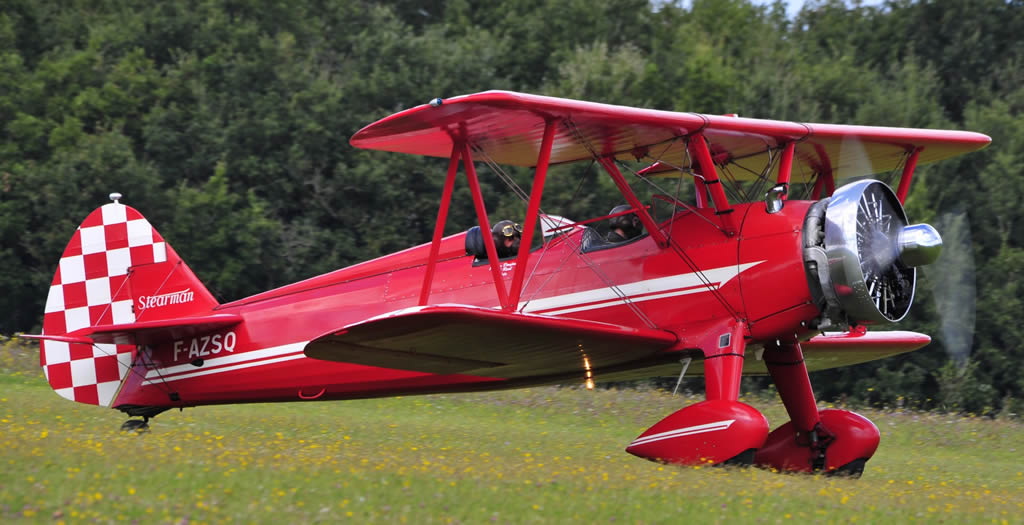 |
Engine on Boeing Stearman N9912H "Old Crow" (Photo by DELEHELLE Eric) |
Boeing Stearman F-AZGR (Photo by DELEHELLE Eric) |
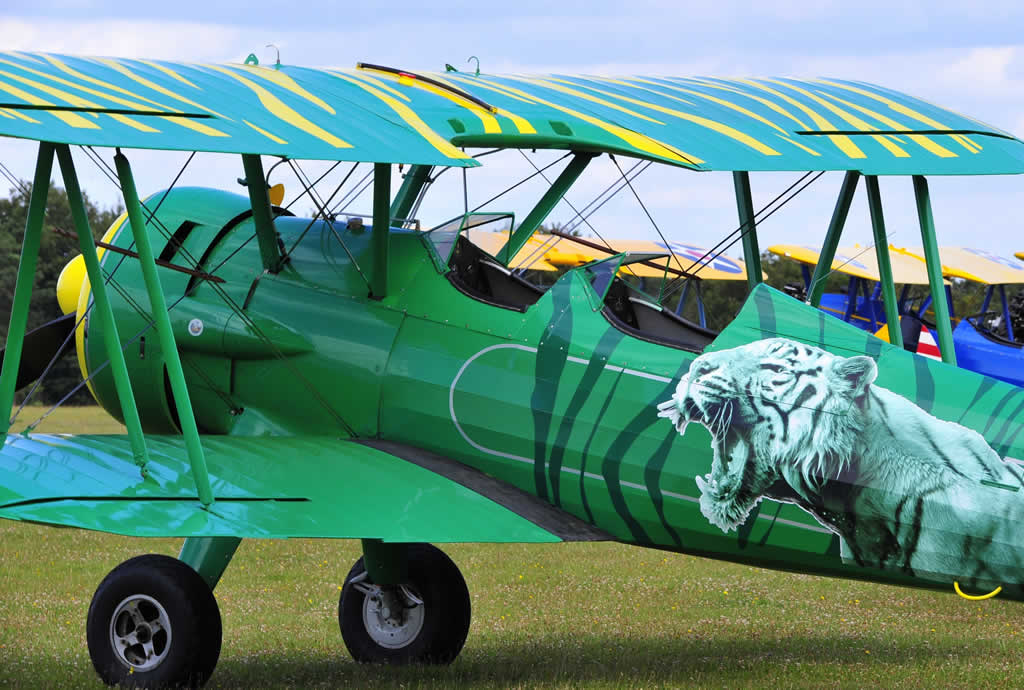 |
Stearman instrument panel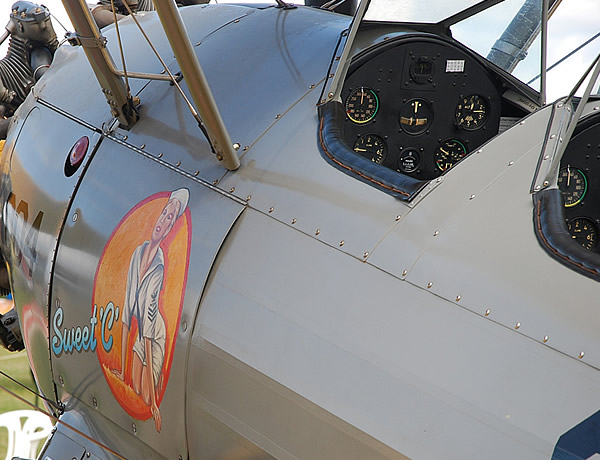 |
Stearman radial engine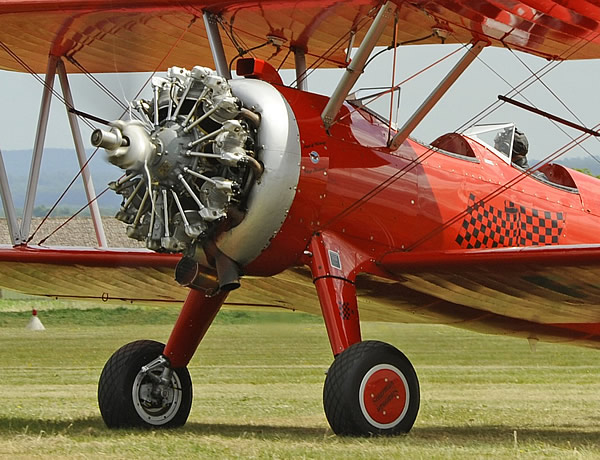 |
U.S. Army Air Force Stearman N55178 (Photo by DELEHELLE Eric) |
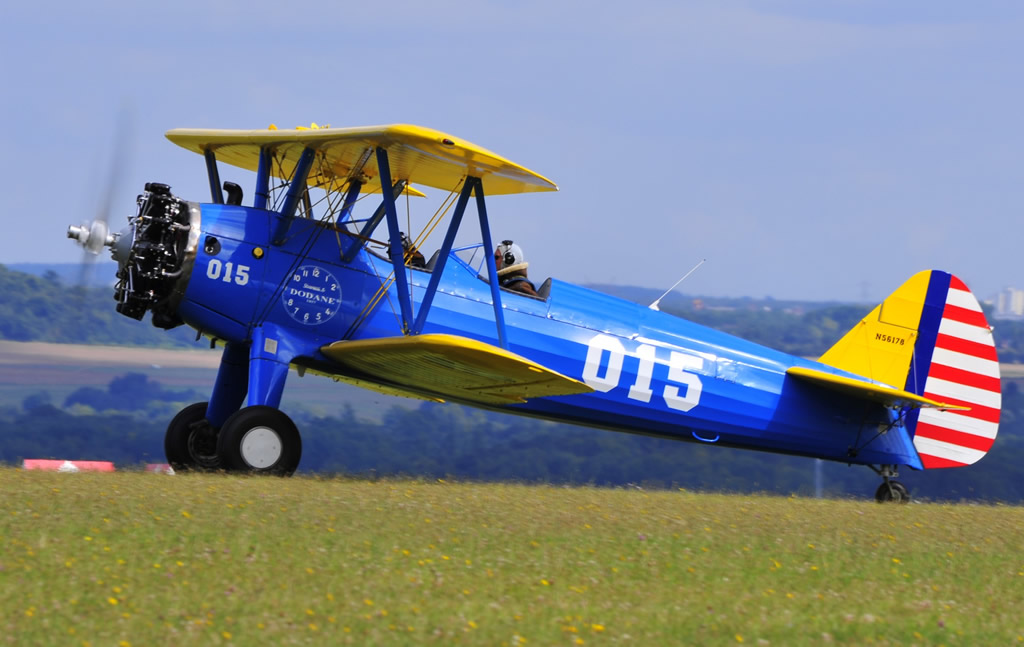 |
The open, tandem cockpit of the Boeing Stearman (Photo by DELEHELLE Eric) |
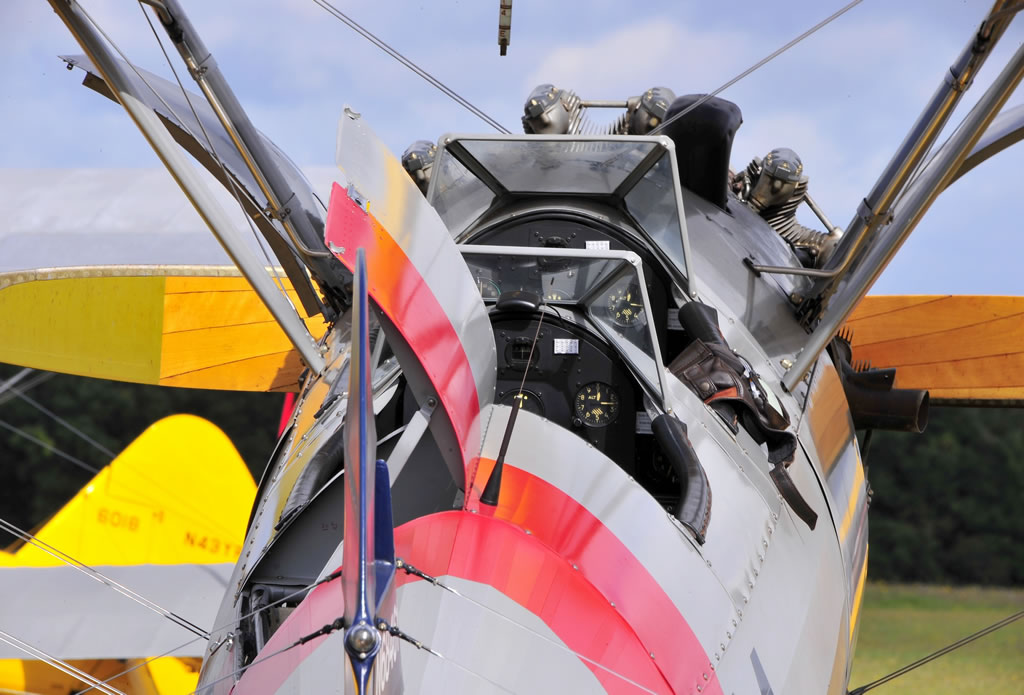 |
Stearman F-AZCK in flight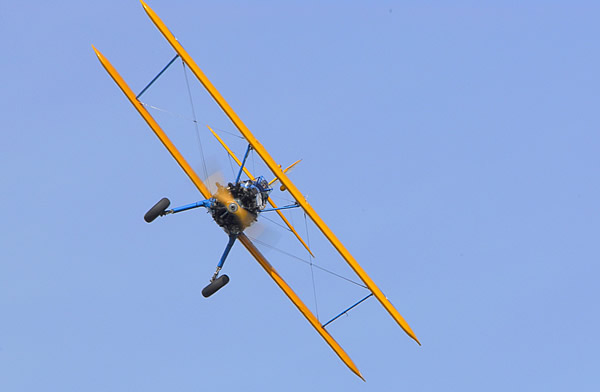 |
Stearman F-AZSQ in flight |
U.S. Navy Stearman N2S-4, N4561N, in flight (Photo by DELEHELLE Eric) |
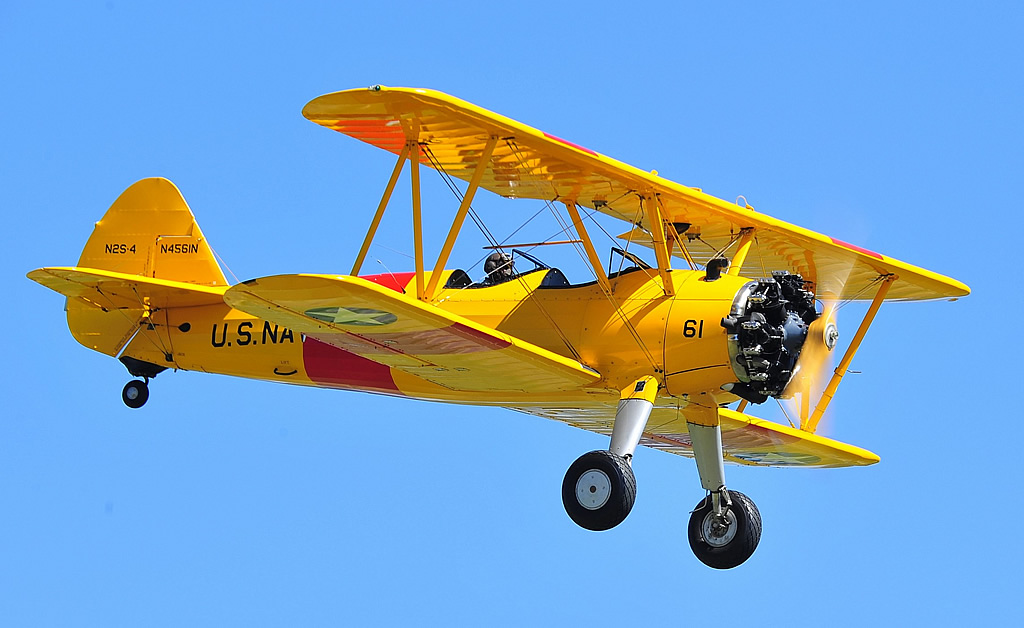 |
Boeing Stearman F-AZMZ in the markings of the U.S. Mail (Photo by DELEHELLE Eric) |
 |
U.S. Navy Stearman N4561N (Photo by DELEHELLE Eric) |
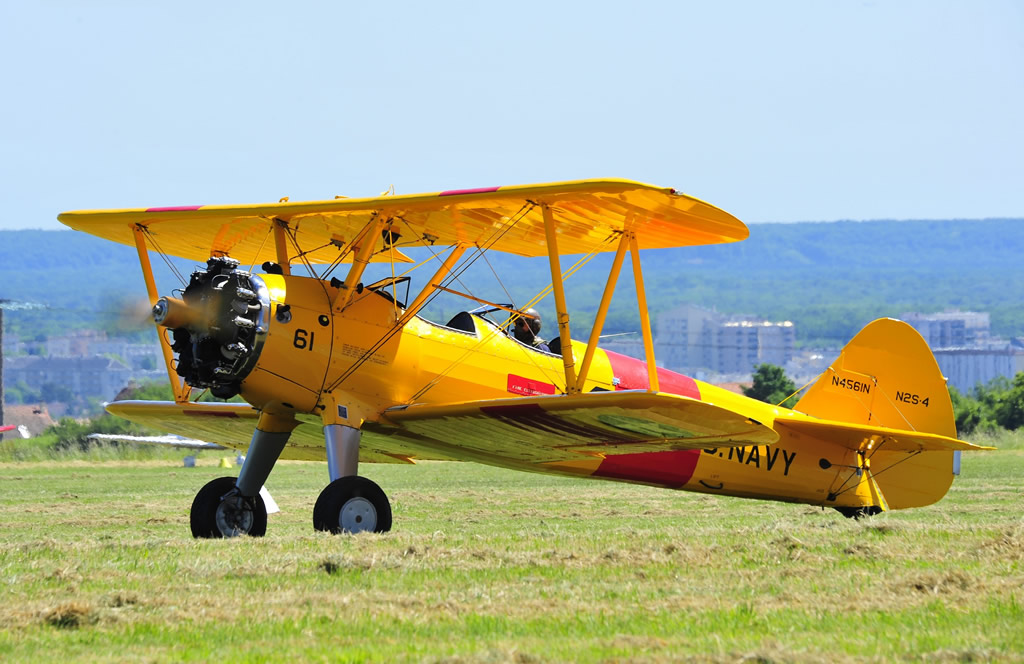 |
Boeing Stearman N2S-3 in the markings of the U.S. Coast Guard (Photo by DELEHELLE Eric) |
 |
Boeing Stearman F-AZGJ (Photo by DELEHELLE Eric) |
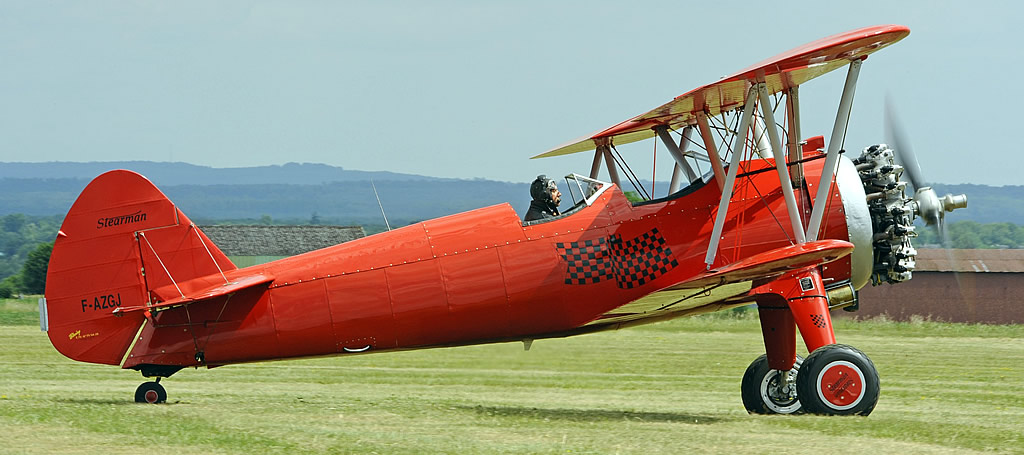 |
Modern Day Stearman Wing Walkers
N450D - 46Aviation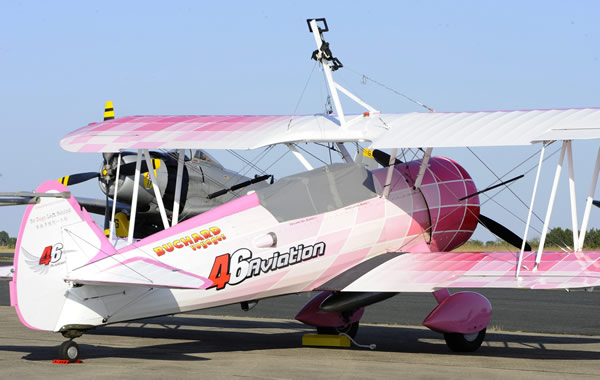 |
N74189 - Breitling |
Modern Day Stearman Nose Art
Nose art on Boeing Stearman N68461... "Sweet C" (Photo by DELEHELLE Eric) |
 |


